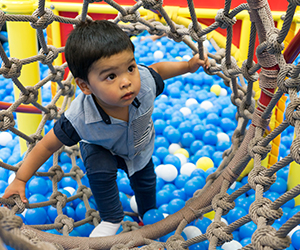
A growth mindset is a transformative belief that intelligence and abilities can be developed through dedication, hard work, and perseverance. When students adopt a growth mindset, they view challenges as opportunities for growth, embrace the power of effort, and persist in the face of setbacks. Cultivating a growth mindset in the classroom is crucial for unlocking students' full potential and fostering a love for lifelong learning. In this blog post, we will explore the concept of a growth mindset, delve into its benefits, and provide practical strategies for educators to nurture and empower students through this mindset.
Understanding the Growth Mindset
The growth mindset, coined by renowned psychologist Dr. Carol S. Dweck, refers to the belief that intelligence and abilities are not fixed traits but can be developed and expanded with effort and perseverance. Students with a growth mindset understand that their abilities are not predetermined but can be enhanced through learning, practice, and embracing challenges.
The Benefits of a Growth Mindset

- Increased motivation and resilience: Students with a growth mindset are more motivated to learn and embrace challenges as opportunities for growth. They exhibit resilience, viewing setbacks as temporary hurdles rather than permanent failures.
- Improved academic performance: Embracing a growth mindset leads to improved academic achievement. Students with this mindset actively seek feedback, engage in effective learning strategies, and persist in the face of difficulties, leading to greater academic success.
- Enhanced self-confidence: A growth mindset nurtures students' self-confidence as they recognize that their abilities can improve over time. They become more willing to take on new tasks, share their ideas, and participate actively in the classroom.
- Development of a love for learning: By understanding that intelligence and abilities can be developed, students with a growth mindset develop a passion for learning. They become more curious, inquisitive, and eager to explore new concepts and challenges.
Strategies for Cultivating a Growth Mindset in the Classroom
- Teach about the brain and neuroplasticity: Educate students about the brain's ability to grow and change through learning. Explain the concept of neuroplasticity and how their efforts and experiences can shape their brain's development.
- Foster a safe and supportive learning environment: Create a classroom environment where students feel safe to take risks, make mistakes, and learn from them. Encourage a collaborative and supportive atmosphere that values effort and growth over perfection.
- Emphasize the power of "yet": Encourage students to adopt the mindset of "I haven't mastered it yet" rather than seeing themselves as incapable. Teach them that learning is a continuous journey, and with effort and perseverance, they can achieve their goals.
- Provide constructive feedback and praise effort: Offer specific feedback that focuses on students' efforts, strategies, and progress rather than solely on outcomes. Acknowledge and celebrate their hard work, resilience, and commitment to learning.
- Teach effective learning strategies: Equip students with effective study skills, problem-solving techniques, and time management strategies. Teach them to break tasks into manageable steps, seek help when needed, and use resources to support their learning.
- Encourage reflection and goal-setting: Promote reflection on learning experiences by asking students to analyze their progress, identify areas for improvement, and set realistic goals. Encourage them to monitor their growth and celebrate milestones along the way.
- Model a growth mindset: As educators, it is essential to model a growth mindset by showcasing our own learning journeys, embracing challenges, and demonstrating a positive attitude toward mistakes and setbacks.
- Cultivate a culture of effort and growth: Integrate growth mindset language and practices into the classroom culture. Encourage students to support and uplift each other, celebrate growth and progress, and appreciate the value of effort and resilience in the learning process.

